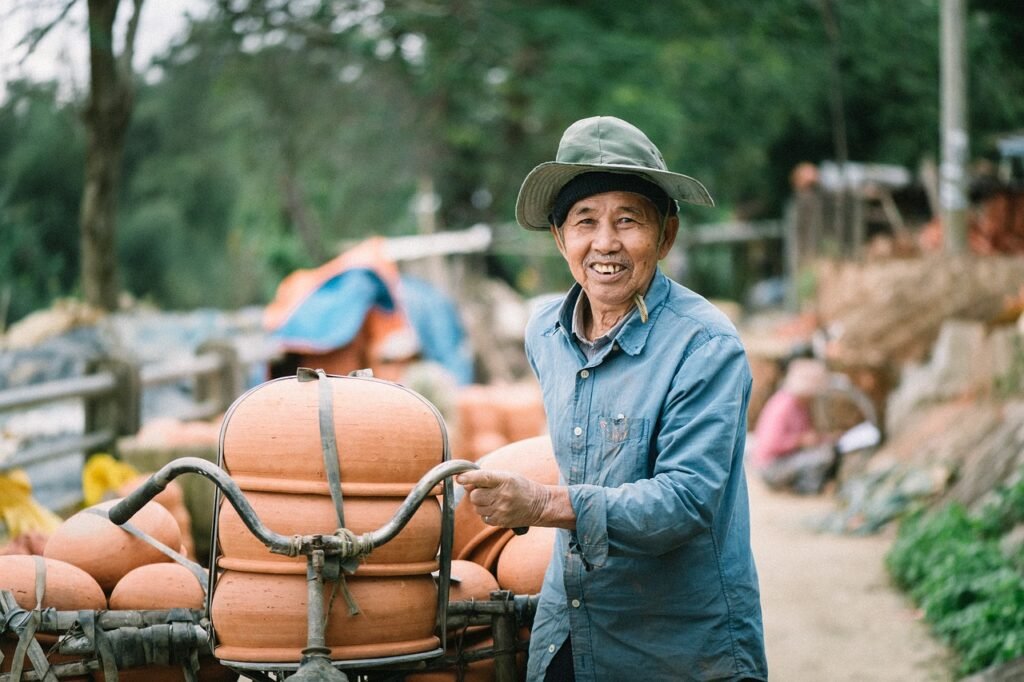Unveiling the Intricate Process of Crafting Alligator Leather Wallets
Imagine holding a luxurious alligator leather wallet in your hands, admiring its exquisite craftsmanship and timeless elegance. Have you ever wondered about the intricate process behind creating such a masterpiece? From carefully sourcing the finest alligator skins to the meticulous handwork of skilled artisans, this article takes you on a captivating journey, uncovering the secrets and artistry involved in crafting alligator leather wallets. Get ready to delve into the world of luxury and discover the fascinating process that transforms raw alligator skins into stunning accessories that stand the test of time.
Sourcing Alligator Skin
Alligator Farms
In order to obtain alligator skin for crafting wallets, one of the primary sources is alligator farms. These farms raise alligators specifically for their skin, ensuring a sustainable and legal supply. Alligator farms have become integral in the preservation of alligator populations, as they create an alternative to hunting wild alligators. The farms provide a controlled environment where the alligators can be raised, ensuring the highest quality of skin for the wallet production.
Wild Alligator Hunting
While alligator farms are the preferred method of sourcing alligator skin, some wallets may still use skins obtained through wild alligator hunting. However, it is important to note that these hunting practices are strictly regulated to protect the alligator population. Specific quotas and licenses are required, and only licensed hunters are allowed to participate. It is crucial to maintain a balance between the demand for alligator leather and the conservation of these incredible creatures.
Sustainability and Conservation Measures
Sustainability and conservation efforts play a significant role in the sourcing of alligator skin. Both alligator farms and wild hunting are subject to regulations that support the long-term survival of the species. By adhering to strict guidelines, such as size and age restrictions, the impact on the alligator population is minimized. Additionally, organizations and governments work together to implement conservation measures that ensure the well-being of these remarkable reptiles.
Skinning and Preparing the Alligator
Removing the Skin
The first step in the leather production process is removing the alligator skin. This delicate procedure requires skilled expertise to prevent damage to the skin. Through precise incisions, the skin is carefully separated from the underlying tissue, preserving the integrity of the material. Specialized tools are used, ensuring that the skin is cleanly and evenly removed. This step sets the foundation for creating high-quality alligator leather wallets.
Cleaning and Fleshing
After the skin is removed, it undergoes a thorough cleaning process. Any remaining flesh or fat is meticulously scraped off the dermis, ensuring a smooth and uniform surface. This process enhances the overall appearance and quality of the skin. The cleaning and fleshing stage is crucial for preparing the alligator skin for the subsequent tanning process.
Salt Preservation
To prevent spoilage and preserve the alligator skin, it is treated with salt. The salt draws the moisture out of the skin, inhibiting bacterial growth and keeping the skin in a stable condition. This preservation method, known as salting, allows for the transportation and storage of the alligator hides without deteriorating their quality. The skins are then ready for the tanning process.
Tanning Process
The tanning process is a vital step in transforming the alligator skin into luxurious leather. It involves chemical treatment and manipulation of the skin to make it more durable, pliable, and resistant to decay. Various tanning techniques are employed, such as chrome tanning or vegetable tanning, to achieve the desired characteristics of the leather. This intricate process requires expertise and precision to ensure the best quality leather for crafting exquisite wallets.

This image is property of pixabay.com.
Designing and Cutting Wallet Patterns
Conceptualizing the Design
Before cutting the alligator leather, designers meticulously conceptualize the design of the wallet. They consider factors such as aesthetic appeal, functionality, and customer preferences. Designers may draw sketches or use computer-aided design (CAD) software to visualize their ideas. This stage is crucial as it lays the foundation for the unique and stylish wallets that will be produced.
Choosing the Right Pattern
Once the design is finalized, the next step is selecting the appropriate pattern for the wallet. A variety of patterns are available, ranging from classic billfold designs to slim cardholder styles. Designers carefully consider the desired features and organizational compartments needed for the wallet. By choosing the right pattern, they ensure that the final product will meet the expectations of customers in terms of both functionality and aesthetics.
Preparing the Template
With the selected pattern in hand, designers prepare a template that will guide the cutting process. The template is made from durable material, such as plastic or cardboard, and serves as a precise guide for creating consistent leather pieces. Designers trace the pattern onto the template, making sure that all dimensions and details are accurately represented. This meticulous preparation provides the necessary foundation for crafting the wallet.
Cutting the Leather Pieces
Using the prepared template, craftsmen carefully cut the alligator leather into the required pieces for the wallet. Skilled hands maneuver sharp knives, ensuring precise and clean cuts. The quality of each cut greatly influences the final result, as it determines the fit and appearance of the wallet. Attention to detail is paramount in this stage to achieve flawlessly cut leather pieces that will come together seamlessly.
Stitching and Construction
Saddle Stitching Technique
When it comes to stitching alligator leather wallets, the saddle stitching technique is often employed. This traditional hand-sewing method is known for its exceptional strength and durability. Skilled craftsmen use two needles and a single thread, passing them through the pre-punched holes in the leather. The crossed pattern of the stitches not only adds an aesthetic appeal but also ensures a strong bond that withstands the test of time.
Preparing the Thread
High-quality thread is crucial for the longevity of the wallet. Craftsmen select the appropriate thread material, such as waxed linen or nylon, considering its strength and compatibility with alligator leather. The thread is then prepared by being waxed, which improves its durability and helps it glide smoothly through the holes during the stitching process. Attention to detail in thread selection and preparation contributes to the overall quality and durability of the wallet.
Assembling the Wallet Components
The stitching process brings all the leather pieces together, creating the individual components of the wallet, such as the main body, various card slots, and coin compartments. Craftsmen carefully align the pieces, ensuring precision and symmetry in their placement. Using the saddle stitching technique, they sew the components together, forming a sturdy and visually appealing structure. This stage requires patience, skill, and meticulous attention to detail.
Edging and Burnishing
To enhance the aesthetics and durability of the wallet, craftsmen meticulously address the edges of the leather. They trim any excess material and smooth the edges to create a polished and refined appearance. Burnishing, a technique that involves the use of specialized tools and friction, is applied to further smoothen and seal the edges. The end result is a wallet with neatly finished edges that exude craftsmanship and attention to detail.

This image is property of pixabay.com.
Finishing Touches
Applying Dyes and Stains
To achieve a desired color or enhance the natural beauty of the alligator leather, dyes and stains are carefully applied. Craftsmen use their expertise to select the appropriate dye or stain, considering factors such as the desired shade, finish, and compatibility with the alligator skin. The dye is evenly applied, ensuring consistent coloration without compromising the distinctive texture and appearance of the leather.
Buffing and Polishing
After the dye or stain has dried, the wallet undergoes a buffing and polishing process. Using specialized tools and techniques, craftsmen gently rub the leather surface, removing any excess dye or stain and smoothing out imperfections. This step enhances the overall shine and luster of the wallet, creating a luxurious and refined appearance.
Adding Hardware and Embellishments
To further elevate the aesthetic appeal and functionality of the wallet, craftsmen add hardware and embellishments. This may include metal logo badges, zippers, buttons, or snaps. The hardware is carefully selected to complement the design and ensure durability. The addition of these details adds a touch of sophistication and uniqueness to each individual wallet.
Quality Control Checks
Before the wallets are deemed ready for distribution, quality control checks are conducted. Experienced craftsmen meticulously inspect each aspect of the wallet, from stitching to finishing touches, ensuring that it meets the highest standards of quality and craftsmanship. From the stitching tension to the smoothness of the edges, every detail is examined to guarantee that customers receive a product of the utmost excellence.
Packaging and Presentation
Selecting the Packaging Material
Packaging plays a significant role in creating a memorable unboxing experience for customers. The packaging material is carefully chosen to mirror the luxury and sophistication of the alligator leather wallet. Craftsmen may opt for high-quality boxes made from exquisite materials such as leather-textured paper or premium cardboard. The packaging is not only visually appealing but also provides protection for the wallet during transportation and storage.
Embossing or Engraving Branding
To further establish brand identity and reinforce the exclusivity of the product, craftsmen may emboss or engrave the brand logo or name onto the packaging. This subtle yet impactful detail adds a sense of authenticity and prestige to the entire unboxing experience. By incorporating branding into the packaging, customers are reminded of the craftsmanship and attention to detail that goes into each wallet.
Adding Certificates of Authenticity
To provide customers with peace of mind and assurance of the wallet’s authenticity, certificates of authenticity may be included in the packaging. These documents serve as a testament to the genuine alligator leather used in the wallet and highlight the craftsmanship involved in its creation. Certificates of authenticity instill confidence in customers, as they can be assured of the quality and origin of the wallet they have purchased.
Creating a Luxurious Unboxing Experience
From the moment customers receive their alligator leather wallet, craftsmen strive to create a luxurious unboxing experience. Every detail, from the packaging design to the way the wallet is presented, is thoughtfully considered. The goal is to make the unboxing process an event filled with excitement and anticipation, reflecting the opulence and prestige customers associate with alligator leather wallets.

This image is property of pixabay.com.
Marketing and Distribution
Targeting the Luxury Market
Alligator leather wallets are inherently associated with luxury and opulence. Therefore, targeting the luxury market is crucial in marketing and distributing these exquisite products. Craftsmen identify niche markets and luxury retailers that align with their brand values, ensuring that the wallets are placed in locations where customers appreciate and seek out exclusive and high-quality items.
Online and Offline Retail Strategies
To reach a wider audience, alligator leather wallets are marketed through both online and offline retail channels. Craftsmen collaborate with luxury online marketplaces and their own e-commerce platforms to showcase their products to a global customer base. Offline, partnerships with high-end boutiques and flagship stores facilitate a personalized and immersive shopping experience, where customers can appreciate the craftsmanship firsthand.
Collaborations and Limited Edition Releases
To create excitement and exclusivity, craftsmen may engage in collaborations with renowned designers or artists. These collaborations yield limited edition releases that attract discerning collectors and enthusiasts. Limited edition alligator leather wallets not only command higher value but also generate anticipation and a sense of urgency among potential buyers. Collaborations and limited releases add a unique touch to the marketing and distribution strategies.
Promoting Customization Options
Craftsmen understand the desire for personalization and individuality. To cater to this demand, they often offer customization options for alligator leather wallets. Customers can choose from a variety of colors, finishes, and even add personalized initials or embossing. This customization not only creates a sense of exclusivity but also allows customers to create a wallet that reflects their own unique style and personality.
Pricing and Cost Factors
Raw Materials and Skin Prices
The pricing of alligator leather wallets is influenced by the cost of raw materials, including the alligator skin itself. The rarity and quality of the skin can significantly impact the price, as obtaining alligator skins can be a costly process. The sourcing methods, such as alligator farms or wild hunting, also affect the cost, with alligator farms generally providing a more sustainable and controlled supply.
Labor and Craftsmanship Costs
The intricate process of crafting alligator leather wallets requires skilled artisans who invest their time, expertise, and meticulous attention to detail. The cost of labor and craftsmanship plays a significant role in determining the final price. The level of craftsmanship, including stitching, cutting, and finishing, contributes to the overall quality and value of the wallet.
Brand Reputation and Prestige
Established brands with a reputation for exceptional quality and craftsmanship often command higher prices. Customers are willing to pay a premium for alligator leather wallets from brands that have built a prestigious status over time. These brands have earned the trust and loyalty of their customers, who associate their wallets with unparalleled craftsmanship, timeless design, and luxury.
Market Demand and Competition
The market demand for alligator leather wallets, as well as the level of competition, can influence the pricing strategy. If there is high demand and limited supply, prices may increase to reflect the exclusivity and rarity of the product. Conversely, intense competition may lead to competitive pricing strategies to attract customers. Price positioning, balancing exclusivity and accessibility, is crucial in ensuring the wallets are priced appropriately in the market.
Maintenance and Care Tips
Cleaning and Conditioning
Proper maintenance and care are essential to preserve the beauty and longevity of alligator leather wallets. Regular cleaning with a soft, damp cloth removes dust and dirt, preventing them from dulling the appearance. Conditioning the leather periodically with a suitable leather conditioner helps keep it moisturized, supple, and resistant to cracking. Following these simple steps helps maintain the pristine condition of the wallet.
Protecting from Moisture and Sunlight
Alligator leather wallets should be protected from excessive moisture and direct sunlight. Exposure to moisture can cause the leather to warp, while sunlight can fade and dry out the material. It is advisable to avoid carrying the wallet in wet conditions and to store it in a cool, dry place away from direct sunlight when not in use. These precautions ensure the wallet retains its quality and appearance for years to come.
Storing and Avoiding Damage
When not in use, properly storing the alligator leather wallet is vital. It is recommended to store the wallet in a soft, dust-free pouch or a specially designed wallet box. This protects it from scratches and prevents the leather from being unnecessarily exposed to external elements. Additionally, avoiding sharp objects or rough surfaces helps prevent any accidental damage that may compromise the integrity of the wallet.
Seeking Professional Restoration
If the alligator leather wallet sustains damage or begins to show signs of wear over time, seeking professional restoration is highly recommended. Expert leather craftsmen possess the knowledge and skills to repair and refinish the wallet, ensuring it retains its original beauty and functionality. By entrusting the restoration to professionals, customers can enjoy their alligator leather wallet for many more years to come.
The Allure of Alligator Leather
Exclusivity and Rarity
Alligator leather wallets inherently possess an air of exclusivity and rarity. Obtaining genuine alligator skin is a meticulous and regulated process, contributing to the exclusivity of the material. The limited availability of alligator skin, combined with the craftsmanship required to transform it into a wallet, makes these products highly sought after by individuals who value luxury and uniqueness.
Durability and Longevity
Alligator leather is renowned for its durability and longevity. The unique composition and structure of alligator skin make it highly resistant to wear and tear, ensuring that wallets made from this material withstand the test of time. Alligator leather wallets become companions that age gracefully, developing a charming patina over the years while retaining their integrity and functionality.
Distinctive Texture and Appearance
The distinctive texture and appearance of alligator leather sets it apart from other types of leather. The iconic scale pattern creates an aesthetically pleasing visual appeal, adding depth and character to the wallet. The natural sheen of the leather enhances the luxurious feel, captivating the eyes and turning heads. Alligator leather wallets are true statement pieces that exude elegance in every detail.
Symbol of Luxury and Status
Owning an alligator leather wallet is a symbol of luxury and status. The craftsmanship, rarity of the material, and the association with fine craftsmanship all contribute to the perception of alligator leather as a luxurious choice. These wallets tell a story of impeccable taste and discernment, representing a level of refinement that captivates those who appreciate the finest things in life.



